Spain, with its rich history and cultural heritage, captivating landscapes, and delectable cuisine, stands as one of Europe’s most sought-after destinations. The warm Mediterranean climate, diverse geographical features, and vibrant festivals draw millions of tourists each year. Major cities such as Madrid, Barcelona, and Seville showcase stunning architectural masterpieces, from the intricate designs of Gaudí to the grand palaces of the Moorish era.
The country’s unique blend of traditional and modern influences is evident in its art, music, and lifestyle. With a welcoming atmosphere and a strong sense of community, Spain invites travelers to explore its charming villages, sun-kissed beaches, and world-renowned vineyards. Whether indulging in tapas at a local bar, participating in lively flamenco performances, or strolling through historic streets, visitors are sure to experience the essence of Spanish culture. In this article, we will delve deeper into the alluring facets of Spain, uncovering its hidden gems and iconic landmarks that make it a must-visit destination for travelers around the globe.
{getToc} $title={Table of Contents}
History of Spain
The history of Spain is a rich tapestry woven from a multitude of cultures, civilizations, and events that have shaped the nation into what it is today. Spanning thousands of years, this history is marked by the influence of various groups, including the Iberians, Celts, Romans, Visigoths, Moors, and Christians, each contributing to the country’s cultural, social, and political evolution.
The earliest known inhabitants of the Iberian Peninsula were the Iberians, who were later joined by the Celts around 1000 BC. By the 3rd century BC, the Romans began their conquest of the region, which lasted until the fall of the Western Roman Empire in the 5th century AD. During Roman rule, Spain flourished economically and culturally, establishing cities, infrastructure, and a legal system that would influence future generations. The Romans also spread Christianity, which became a dominant force in the region.
After the fall of Rome, the Visigoths, a Germanic tribe, took control of the Iberian Peninsula. They established a kingdom that lasted for about two centuries, marked by relative stability and the spread of Christianity. However, in the early 8th century, the Moors, a Muslim group from North Africa, invaded and rapidly conquered much of Spain. This period, known as the Islamic Golden Age, lasted for several centuries, during which the Moors brought advancements in science, mathematics, medicine, and architecture. Cities like Córdoba and Granada became centers of learning and culture, showcasing stunning architecture such as the Alhambra and the Great Mosque of Córdoba.
The Reconquista, a centuries-long campaign by Christian kingdoms to reclaim territory from the Moors, began in the early 8th century and continued until 1492. This year marked a significant turning point in Spanish history with the fall of Granada, the last Muslim stronghold in Spain. The Reconquista not only unified Spain under Christian rule but also paved the way for exploration and expansion.
Following the Reconquista, Spain entered a golden age characterized by exploration, colonization, and the rise of a powerful empire. Christopher Columbus’s expedition in 1492, sponsored by King Ferdinand and Queen Isabella, led to the discovery of the Americas, marking the beginning of Spanish colonization in the New World. Over the next few centuries, Spain expanded its empire, establishing colonies across the Americas, the Caribbean, and parts of Asia, leading to immense wealth and influence.
However, the 17th century brought challenges, including military defeats, economic decline, and the loss of territories. The War of Spanish Succession (1701-1714) further weakened Spain’s power, leading to the establishment of the Bourbon dynasty. The 19th century was marked by political instability, with Spain facing internal strife, regional uprisings, and the loss of its colonies, particularly in the Spanish-American War of 1898.
The 20th century was characterized by social and political upheaval, culminating in the Spanish Civil War (1936-1939), a conflict between the Republicans and the Nationalists led by General Francisco Franco. Franco's regime, which lasted until his death in 1975, was marked by repression and censorship but also economic recovery in the latter part of his rule.
After Franco’s death, Spain transitioned to democracy, establishing a constitutional monarchy. The Spanish Constitution of 1978 laid the groundwork for a modern, democratic state, promoting regional autonomy and cultural diversity. Since then, Spain has become a member of the European Union and has enjoyed economic growth, although it has faced challenges, including economic crises and political fragmentation.
Today, Spain is known for its vibrant culture, rich history, and diverse landscapes, making it a popular destination for travelers. Its historical legacy continues to shape its identity, reflecting a blend of influences that define the essence of the nation. {inAds}
Culture of Spain
Spain is renowned for its rich and diverse culture, which reflects a fusion of historical influences and regional variations. The country’s culture is characterized by its vibrant traditions, art, music, cuisine, and festivals, making it a fascinating destination for both locals and visitors.
1. Art and Architecture
Spain has a rich artistic heritage that spans centuries, featuring renowned artists such as Pablo Picasso, Salvador Dalí, and Francisco Goya. The architecture is equally impressive, showcasing a mix of styles from the Moorish influence seen in the Alhambra in Granada to the Gothic cathedrals like La Sagrada Familia in Barcelona. The country is also home to famous art museums, such as the Prado Museum in Madrid, which houses works by masters like Velázquez and El Greco.
2. Music and Dance
Music and dance play a vital role in Spanish culture, with genres varying by region. Flamenco, originating from Andalusia, is perhaps the most iconic Spanish dance, known for its passionate movements and emotional music. Other traditional forms include the jota in Aragon, the sardana in Catalonia, and the muñeira in Galicia. Spain’s musical landscape also includes classical guitar, which has gained international recognition.
3. Cuisine
Spanish cuisine is celebrated for its flavors, diversity, and regional specialties. Tapas, small plates of food served in bars, are a hallmark of Spanish dining and encourage social interaction. Each region has its own culinary traditions: paella from Valencia, pintxos from the Basque Country, and seafood dishes from Galicia. Additionally, Spain is known for its wines, especially those from regions like Rioja and Jerez.
4. Festivals and Traditions
Spain is famous for its colorful festivals, which reflect the country’s traditions and community spirit. La Tomatina, held in Buñol, is a unique tomato-throwing festival, while the Running of the Bulls in Pamplona attracts visitors worldwide. Semana Santa (Holy Week) is celebrated with elaborate processions in cities like Seville, showcasing religious devotion and artistic expression. Additionally, regional festivals, such as Las Fallas in Valencia and Feria de Abril in Seville, highlight local customs and cuisine.
5. Language and Literature
The official language of Spain is Spanish (Castilian), but the country is home to several regional languages, including Catalan, Galician, and Basque, reflecting its cultural diversity. Spanish literature boasts a rich tradition, with classics from authors like Miguel de Cervantes, whose work "Don Quixote" is considered one of the greatest novels in Western literature. Contemporary Spanish authors continue to contribute to the literary landscape, gaining international acclaim.
6. Sports
Sports play a significant role in Spanish culture, with football (soccer) being the most popular. La Liga, Spain's top football league, features famous clubs like FC Barcelona and Real Madrid, each boasting a passionate fan base. Other popular sports include basketball, tennis, and bullfighting, which, despite being controversial, remains a traditional spectacle in some regions.
7. Family and Social Life
Family is at the heart of Spanish culture, with strong ties and traditions passed down through generations. Social gatherings often revolve around meals, where sharing food and stories fosters connections. Spanish people are known for their warm hospitality, making visitors feel welcome in both homes and public spaces.
Spain's culture is a vibrant blend of history, tradition, and modernity, offering a unique experience for anyone who visits or engages with its people. The country's artistic achievements, culinary delights, lively festivals, and rich linguistic diversity contribute to a cultural tapestry that continues to evolve while honoring its past.{inAds}
Historical Places of Spain
Spain is a country steeped in history, with a wealth of historical sites that reflect its diverse cultural heritage. From ancient Roman ruins to stunning Moorish palaces and grand Gothic cathedrals, Spain offers a myriad of historical places that attract visitors from around the world. Here are some of the most significant historical sites in Spain:

Alhambra (Granada)
The Alhambra is a stunning palace and fortress complex that exemplifies Moorish architecture and design. Constructed in the mid-13th century during the Nasrid dynasty, it is famous for its intricate tile work, lush gardens, and breathtaking views of the Sierra Nevada mountains. The Alhambra includes notable features such as the Nasrid Palaces, the Generalife gardens, and the iconic Lions’ Courtyard.
{inAds}
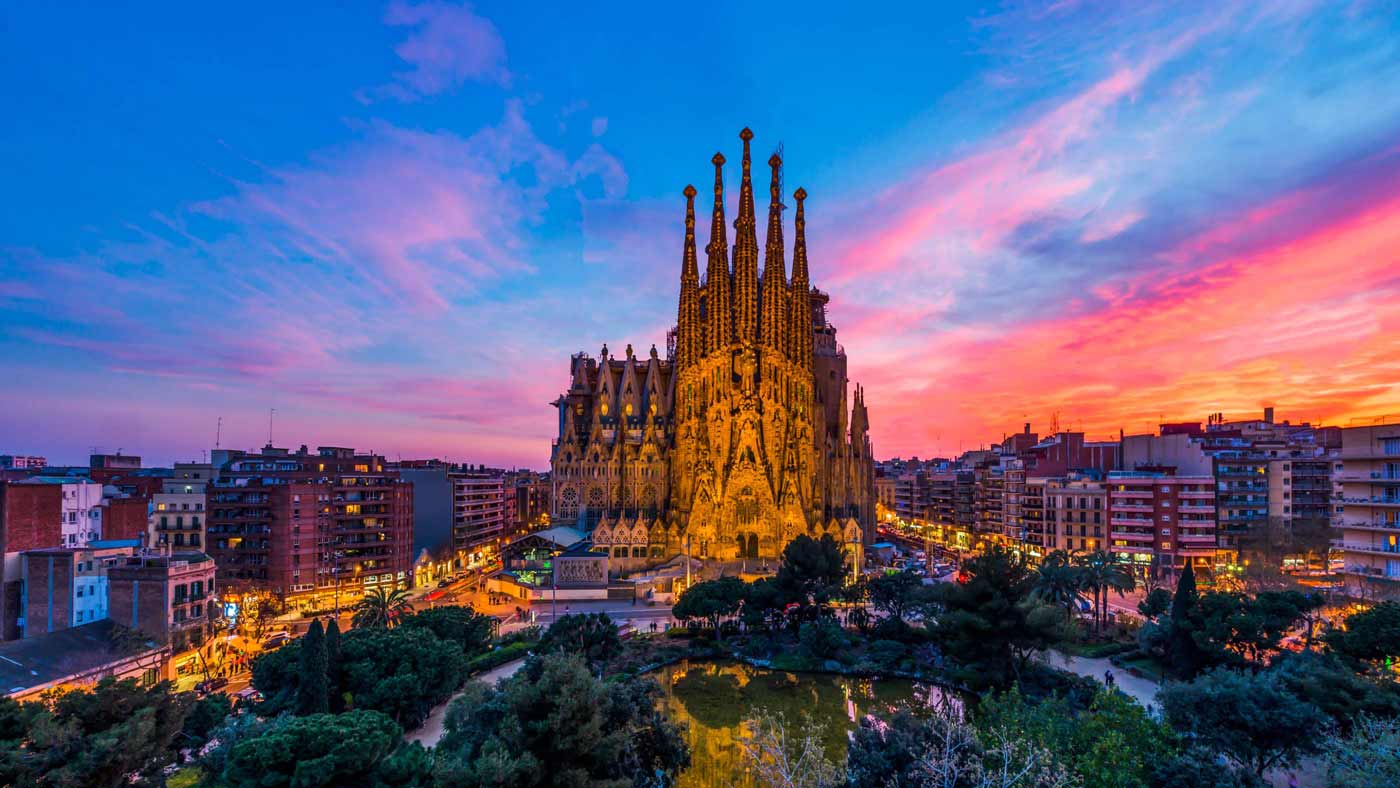
Sagrada Família (Barcelona)
Designed by the architect Antoni Gaudí, the Sagrada Família is an extraordinary basilica that has been under construction since 1882. This UNESCO World Heritage site is renowned for its unique architectural style, combining Gothic and Art Nouveau elements. The intricate facades and towering spires make it one of the most recognizable landmarks in Spain.

Roman Aqueduct (Segovia)
The Roman aqueduct in Segovia is one of the best-preserved examples of ancient Roman engineering. Built in the 1st century AD, this monumental structure stretches over 800 meters and features 167 arches. It served to transport water from the nearby mountains to the city, showcasing the ingenuity of Roman architecture.

Mezquita-Catedral (Córdoba)
The Mezquita-Catedral, or Mosque-Cathedral, is a remarkable architectural masterpiece that reflects the complex history of Córdoba. Originally built as a mosque in the 8th century, it was later converted into a cathedral in the 13th century. The site features stunning horseshoe arches, intricate mosaics, and a stunning Renaissance nave, embodying the fusion of Islamic and Christian architectural styles.

Palace of the Aljafería (Zaragoza)
The Aljafería Palace is a stunning example of Islamic architecture from the 11th century, built during the Taifa of Zaragoza. This fortress features beautiful decorative elements, including intricate stucco work and lush gardens. It later served as a royal palace and is now home to the Aragonese parliament, making it a symbol of the region's historical significance.
{inAds}
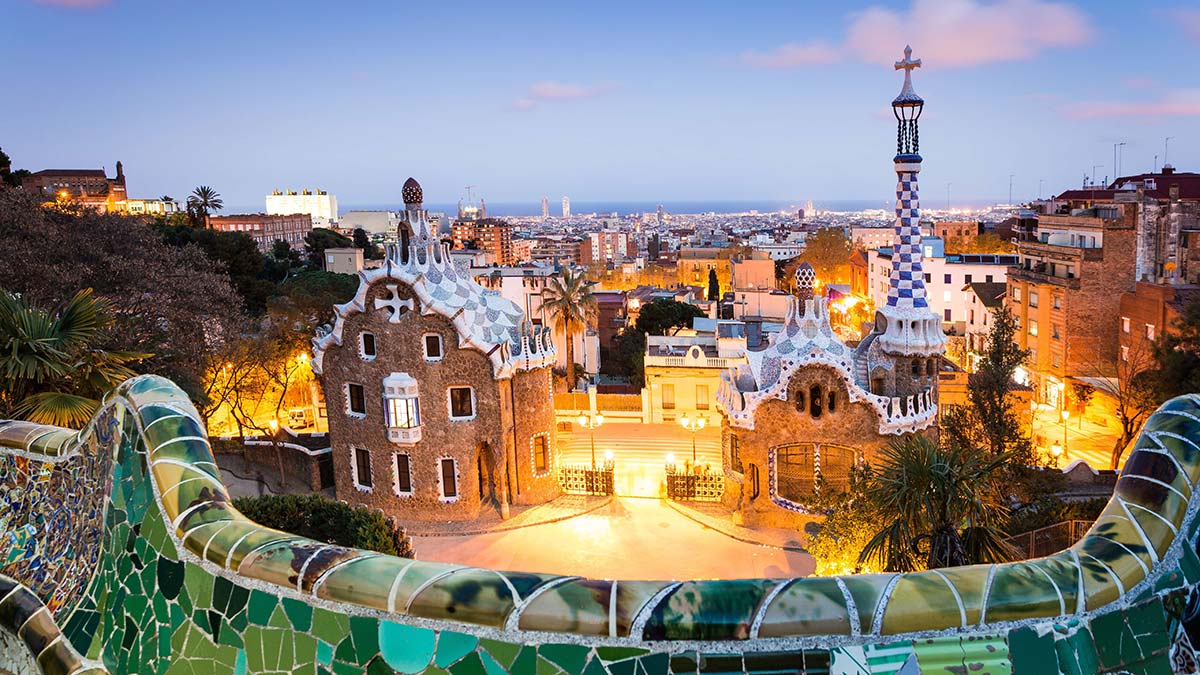
Park Güell (Barcelona)
Another masterpiece by Antoni Gaudí, Park Güell is a public park filled with colorful mosaics, whimsical structures, and organic forms. Designed in the early 20th century, it reflects Gaudí’s unique vision of harmonizing architecture with nature. The park offers stunning views of Barcelona and is a UNESCO World Heritage site.
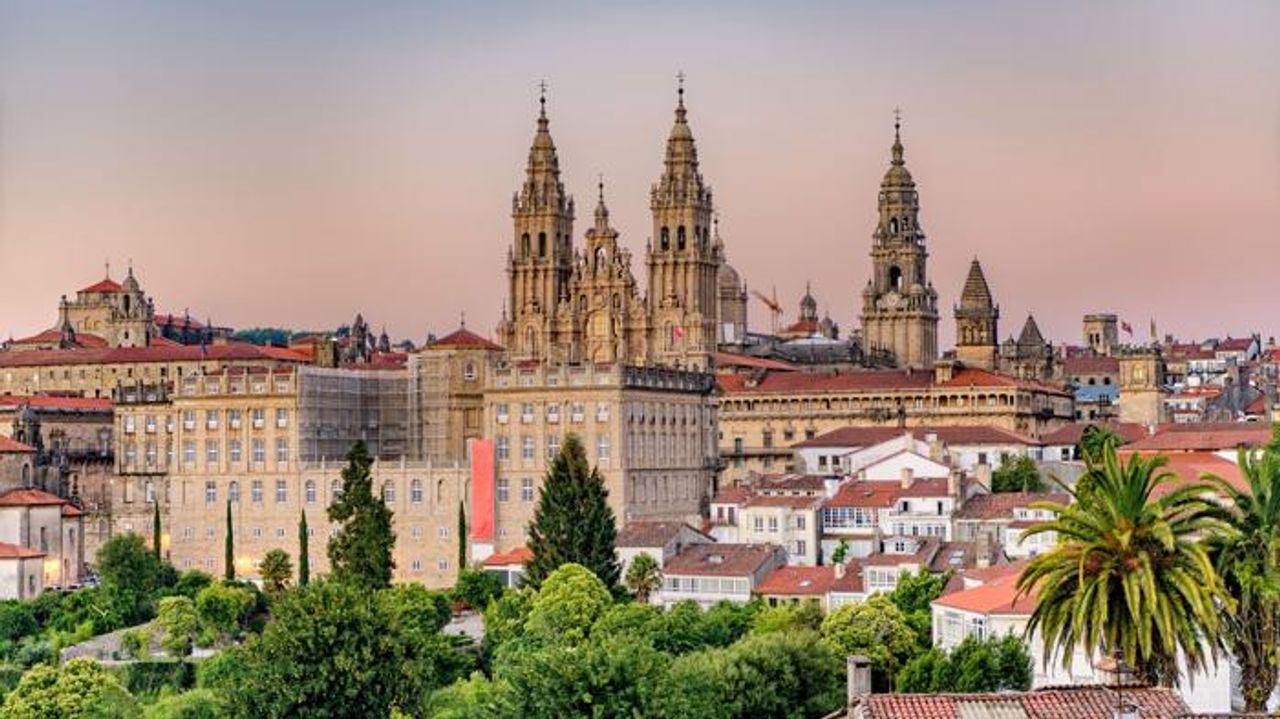
Cathedral of Santiago de Compostela (Santiago de Compostela)
The Cathedral of Santiago de Compostela is a major pilgrimage site and the final destination of the Camino de Santiago, a historic pilgrimage route. Built in the 11th century, the cathedral features a mix of Romanesque, Gothic, and Baroque architectural styles. The relics of Saint James are housed here, attracting pilgrims from around the world.

Acueducto de los Milagros (Mérida)
The Aqueduct of the Miracles is an ancient Roman aqueduct located in Mérida, built in the 1st century AD. This impressive structure is notable for its height and design, featuring two tiers of arches that showcase Roman engineering prowess. It was part of a system that supplied water to the city.
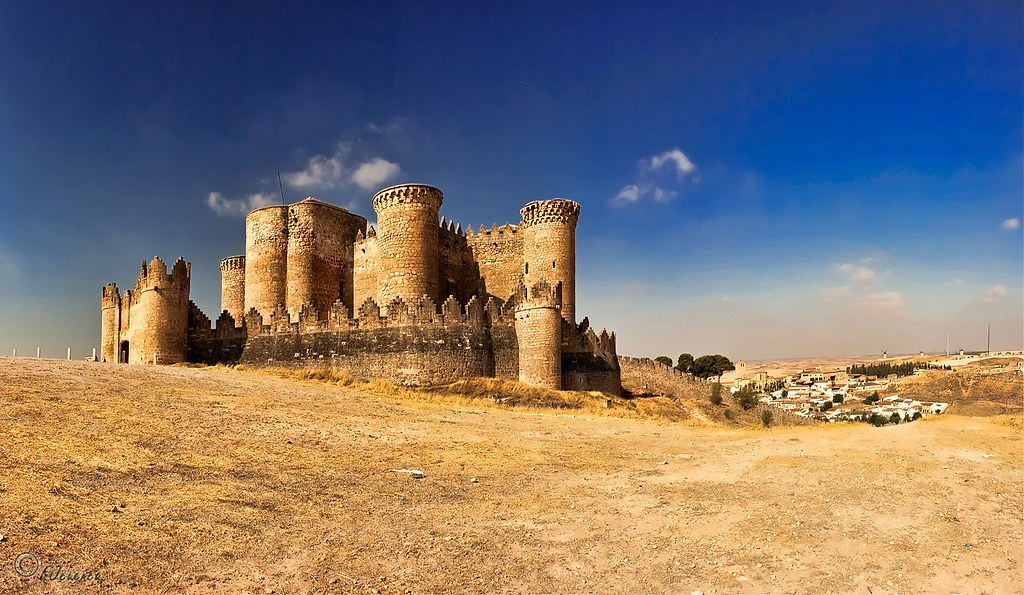
Castillo de Belmonte (Cuenca)
Belmonte Castle is a well-preserved medieval fortress that dates back to the 15th century. Its impressive towers and fortified walls reflect the military architecture of the time. The castle offers visitors a glimpse into Spain's medieval past and provides panoramic views of the surrounding landscape.
Spain's historical places are a testament to its rich and diverse cultural heritage, reflecting the influences of various civilizations that have shaped the nation over the centuries. From grand palaces and cathedrals to ancient ruins and fortresses, these sites offer valuable insights into Spain's history and continue to captivate visitors with their beauty and significance. Whether exploring the intricate details of Moorish architecture or standing before the monumental achievements of the Romans, visitors to Spain can immerse themselves in the stories of its past.{inAds}
Places to Visit in Spain
Spain is a diverse country brimming with vibrant cities, stunning landscapes, and rich cultural heritage. Each region offers unique experiences, making it a wonderful destination for travelers. Here are some must-visit places across Spain:
Barcelona
Barcelona is known for its distinctive architecture, vibrant art scene, and beautiful beaches. Key attractions include:
- Sagrada Família: Antoni Gaudí’s iconic basilica, a masterpiece of modernist architecture.
- Park Güell: A whimsical park filled with colorful mosaics and organic forms, also designed by Gaudí.
- Gothic Quarter: A maze of narrow medieval streets, home to historic buildings, shops, and cafes.
- La Rambla: A bustling street perfect for walking, dining, and people-watching.
Madrid
The capital city of Spain, Madrid is a cultural hub featuring world-class museums and parks. Key attractions include:
- Prado Museum: One of the most important art museums, housing works by Velázquez, Goya, and Bosch.
- Royal Palace of Madrid: The official residence of the Spanish royal family, with opulent rooms and beautiful gardens.
- Retiro Park: A large and popular park in the city center, perfect for a leisurely stroll or a boat ride.
- Puerta del Sol: A lively square known for its iconic statue of the Bear and the Strawberry Tree.
Seville
Seville is the capital of Andalusia and is known for its rich Moorish history, flamenco culture, and vibrant festivals. Key attractions include:
- Seville Cathedral: One of the largest cathedrals in the world, home to the tomb of Christopher Columbus.
- Alcázar of Seville: A stunning royal palace originally developed by Moorish Muslim kings, renowned for its intricate architectural details.
- Metropol Parasol: A modern architectural marvel in the old quarter, offering panoramic views of the city.
- Barrio Santa Cruz: A charming neighborhood with narrow streets, picturesque squares, and beautiful patios.
Granada
Granada is famous for its rich Islamic heritage and stunning architecture. Key attractions include:
- Alhambra: A UNESCO World Heritage site, this palace and fortress complex is known for its exquisite Islamic architecture and beautiful gardens.
- Generalife: The summer palace of the Nasrid rulers, featuring lush gardens and breathtaking views of the Alhambra.
- Albayzín: The historic Moorish quarter with narrow winding streets and stunning views of the Alhambra.
Valencia
Valencia is a vibrant city known for its futuristic architecture, delicious cuisine, and beautiful beaches. Key attractions include:
- City of Arts and Sciences: An architectural complex featuring a science museum, planetarium, aquarium, and more.
- Valencia Cathedral: A stunning cathedral claiming to house the Holy Grail, with a mix of architectural styles.
- Turia Gardens: A former riverbed transformed into a beautiful park, ideal for walking, cycling, and picnicking.
- La Lonja de la Seda: A UNESCO World Heritage site, this Gothic building was once a silk trading center.
Bilbao
Bilbao, located in the Basque Country, is known for its modern architecture and rich culinary scene. Key attractions include:
- Guggenheim Museum: A modern and contemporary art museum, known for its innovative building design by Frank Gehry.
- Casco Viejo: The old town, full of narrow streets, shops, and charming squares.
- Ribera Market: A bustling market offering fresh produce, local delicacies, and a taste of Basque culture.
San Sebastián
San Sebastián, also in the Basque Country, is famous for its beautiful beaches and culinary excellence. Key attractions include:
- La Concha Beach: A picturesque beach with calm waters, ideal for sunbathing and swimming.
- Old Town (Parte Vieja): Known for its lively tapas bars and bustling atmosphere.
- Pintxos: A culinary delight, the Basque version of tapas, best enjoyed in local bars.
Santiago de Compostela
Santiago de Compostela is known for its historic significance as a pilgrimage site. Key attractions include:
- Santiago de Compostela Cathedral: The final resting place of Saint James, featuring stunning Romanesque architecture.
- Old Town: A UNESCO World Heritage site, with narrow streets, historic buildings, and a vibrant atmosphere.
Toledo
Toledo, a UNESCO World Heritage site, is known for its medieval architecture and rich history. Key attractions include:
- Toledo Cathedral: A stunning example of Gothic architecture with intricate interiors.
- Alcázar of Toledo: A fortress that has served various purposes throughout history, now housing a military museum.
- Jewish Quarter: A historic area with synagogues, museums, and narrow winding streets.
Málaga
Málaga, located on the Costa del Sol, is known for its beaches, historical sites, and vibrant culture. Key attractions include:
- Picasso Museum: Celebrating the life and works of Pablo Picasso, who was born here.
- Alcazaba of Málaga: A well-preserved Moorish fortress offering stunning views of the city.
- Málaga Cathedral: A Renaissance cathedral known as "La Manquita" (the one-armed lady) due to its unfinished second tower.
Spain is a country with a rich and varied cultural landscape, offering a plethora of places to visit. From the stunning architecture of Barcelona and Madrid to the historical charm of Toledo and Granada, each destination offers a unique experience that showcases the diverse heritage of Spain. Whether you are interested in art, history, cuisine, or simply soaking up the vibrant atmosphere, Spain has something to offer every traveler.{inAds}
Population and Economy of Spain
Spain is a vibrant country located in Southwestern Europe, known for its rich history, diverse culture, and significant contributions to global society. Understanding its population dynamics and economic structure provides insight into the nation's development and current status.
Population of Spain
As of 2024, Spain's population is approximately 47 million people, making it one of the largest countries in the European Union. The population is characterized by:
Diversity: Spain is home to a variety of ethnicities, languages, and cultures. While Spanish (Castilian) is the official language, other regional languages such as Catalan, Galician, and Basque are also spoken.
Urbanization: A significant portion of the population lives in urban areas, with major cities like Madrid, Barcelona, Valencia, and Seville being the most populous. Madrid, the capital, is the largest city, with over 3 million residents.
Aging Population: Spain has one of the highest life expectancies in the world, currently around 83 years. However, the country faces challenges related to an aging population, with a declining birth rate and increasing life expectancy leading to demographic shifts.
Economy of Spain
Spain has a diverse and developed economy, ranking as the fourth largest in the Eurozone and the 14th largest globally. Key aspects of the Spanish economy include:
GDP: As of 2023, Spain's Gross Domestic Product (GDP) is approximately €1.4 trillion, with a GDP per capita of around €30,000. The economy is characterized by a mix of traditional and modern industries.
Key Sectors:
Services: The service sector is the largest component of the Spanish economy, accounting for about 75% of GDP. Tourism is a crucial part of this sector, with Spain being one of the most popular tourist destinations in the world, attracting millions of visitors annually to its beaches, historical sites, and cultural events.
Manufacturing: Spain has a strong manufacturing sector, particularly in automotive, textiles, machinery, and food processing. Major automotive companies, including SEAT and Renault, have production facilities in the country.
Agriculture: Spain is a significant agricultural producer, known for its olives, wine, fruits, and vegetables. The country is the world's largest producer of olive oil and one of the top wine producers globally.
Unemployment and Labor Market: Spain has historically faced high unemployment rates, especially among youth. As of 2024, the unemployment rate is around 12.5%, although it has been decreasing in recent years. Labor reforms and economic recovery have contributed to job creation, particularly in tourism and services.
Foreign Investment and Trade: Spain attracts substantial foreign investment, particularly in real estate, renewable energy, and technology. The country’s strategic location serves as a gateway to Europe, Africa, and Latin America, making it an essential hub for international trade. Spain’s primary trading partners include Germany, France, and the United States.
Economic Challenges: Despite recovery from the economic crisis of the late 2000s, Spain faces ongoing challenges, including high public debt, income inequality, and the impact of global economic fluctuations. The COVID-19 pandemic significantly affected the tourism sector, but recovery efforts and government support have aided in revitalizing the economy.
Spain's population and economy reflect a dynamic and evolving landscape. With a rich cultural heritage, a diverse economy, and strategic geographic advantages, Spain continues to play a vital role in Europe and the global market. As the country addresses its demographic challenges and economic recovery, it remains a significant player on the world stage.{inAds}
Famous Brands of Spain
Spain is home to many famous brands that span various industries, from fashion and food to automotive and consumer goods. Here’s a look at some of the most recognized Spanish brands:
1. Zara
Zara is one of the largest fashion retailers in the world, known for its trendy clothing and fast-fashion model. Founded in 1974 by Amancio Ortega and Rosalía Mera, Zara is part of the Inditex Group and has stores in over 90 countries.
2. Iberia
Iberia is Spain’s flagship airline and one of the oldest airlines in the world, established in 1927. It operates flights to numerous international destinations and is a member of the International Airlines Group (IAG).
3. Telefónica
Telefónica is one of the largest telecommunications companies globally, providing mobile, internet, and television services. Founded in 1924, its brand, Movistar, is well-known in Spain and Latin America.
4. Banco Santander
Banco Santander is one of the largest banks in Europe and Latin America, offering a wide range of financial services. Established in 1857, it has a strong international presence and is recognized for its customer service and innovation.
5. Mango
Mango is a global fashion brand known for its stylish clothing and accessories for men, women, and children. Founded in 1984, the brand has expanded to over 100 countries and is recognized for its quality and design.
6. Seat
SEAT is a Spanish automobile manufacturer established in 1950. It is known for producing affordable and stylish cars, with models like the Leon and Ibiza gaining popularity both in Spain and internationally.
7. Bacardi
Although originally founded in Cuba, Bacardi has strong ties to Spain, particularly through its rum production. The Bacardi brand is one of the largest privately held spirits companies in the world, and its products, including Bacardi Rum, are popular globally.
8. LaLiga
LaLiga is the top professional football division in Spain, representing the country’s most prestigious football clubs, including FC Barcelona and Real Madrid. The LaLiga brand is recognized worldwide and has a significant impact on football culture and economy.
9. Estrella Damm
Estrella Damm is a well-known Spanish beer brand, founded in 1876 in Barcelona. It is recognized for its Mediterranean flavor and is popular in Spain and abroad, often associated with the vibrant lifestyle of the region.
10. Ducati (Spain Division)
Although Ducati is an Italian motorcycle manufacturer, its operations in Spain and significant market presence have made it a popular brand among Spanish motorcycle enthusiasts. Known for high-performance motorcycles, Ducati has a loyal following.
11. Chupa Chups
Chupa Chups, the famous lollipop brand, was founded in Spain in 1958 by Enric Bernat. The brand is recognized worldwide for its colorful packaging and a wide variety of flavors.
12. Pans & Company
Pans & Company is a popular fast-food chain in Spain, specializing in sandwiches and casual dining. It is known for its emphasis on fresh ingredients and quick service, making it a favorite among locals.
13. Casa Pedro Domecq
This brand is renowned for its sherry wines and brandies, produced in the Jerez region. Casa Pedro Domecq represents a tradition of quality and craftsmanship in Spanish winemaking.
14. Sangría
While not a specific brand, Sangría is a popular Spanish drink made from red wine, fruit, and other ingredients. Numerous brands produce bottled Sangría, making it widely recognized as a refreshing beverage associated with Spanish culture.
These brands showcase the diversity and innovation of Spanish industries, reflecting the country's cultural heritage and modern advancements. From fashion and finance to food and automotive, these brands contribute significantly to Spain's economy and global presence.{inAds}
Famous Foods of Spain
Spain is renowned for its diverse and flavorful cuisine, which varies by region and reflects the country's rich cultural heritage. Here’s a look at some of the most famous foods that define Spanish gastronomy:
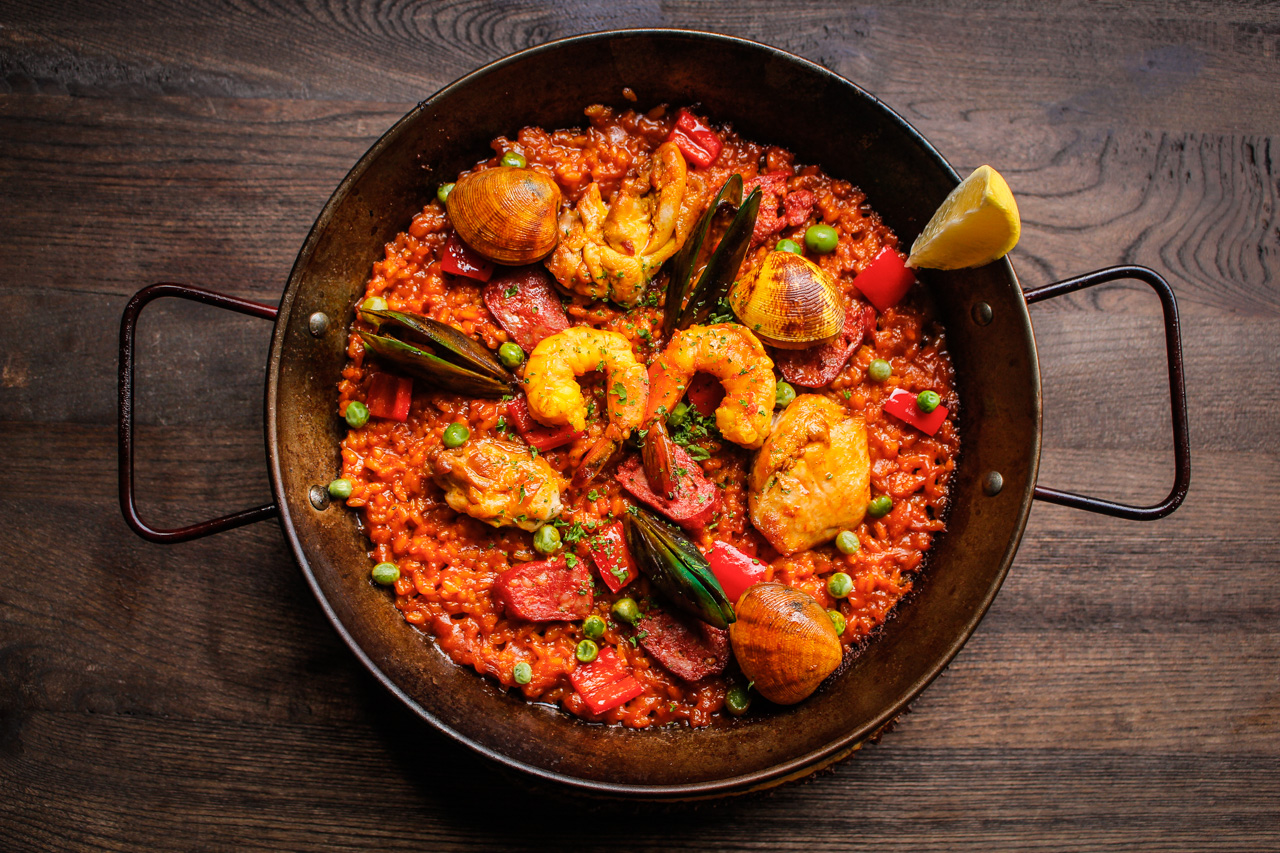
1. Paella
Originating from Valencia, paella is perhaps Spain's most famous dish. Traditionally made with rice, saffron, vegetables, and a variety of proteins such as chicken, rabbit, or seafood, paella is often cooked in a wide, shallow pan called a "paellera." Variations include seafood paella and vegetable paella.

2. Tapas
Tapas are small plates of food served as appetizers or snacks. They can include a variety of items, such as olives, cheese, chorizo, patatas bravas (fried potatoes with spicy sauce), and calamari. The tradition of sharing tapas fosters a social dining experience and is popular throughout Spain.
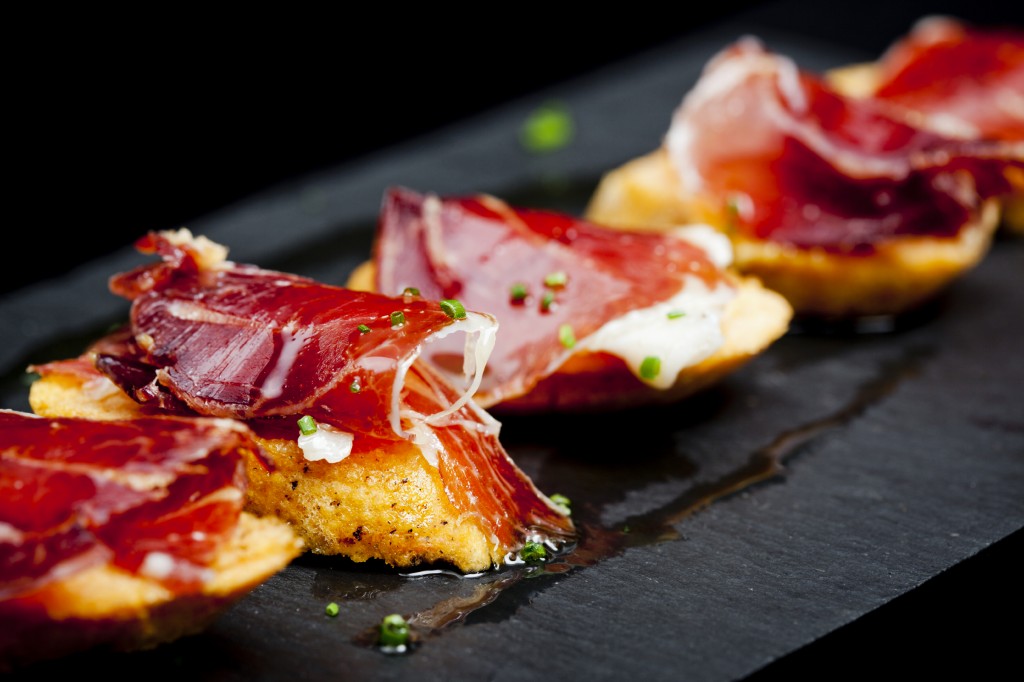
3. Jamón Ibérico
Jamón Ibérico is a high-quality cured ham made from the Iberian pig. It is prized for its rich flavor and delicate texture. There are different varieties, with Jamón Ibérico de Bellota being the most esteemed, made from acorn-fed pigs. It's often enjoyed thinly sliced and served with bread. Note: Muslim visitors should be careful.

4. Tortilla Española (Spanish Omelette)
Tortilla Española is a classic Spanish dish made from eggs, potatoes, and onions, cooked together to form a thick omelet. It can be served hot or cold and is a staple in Spanish households, often enjoyed as a tapa or light meal.
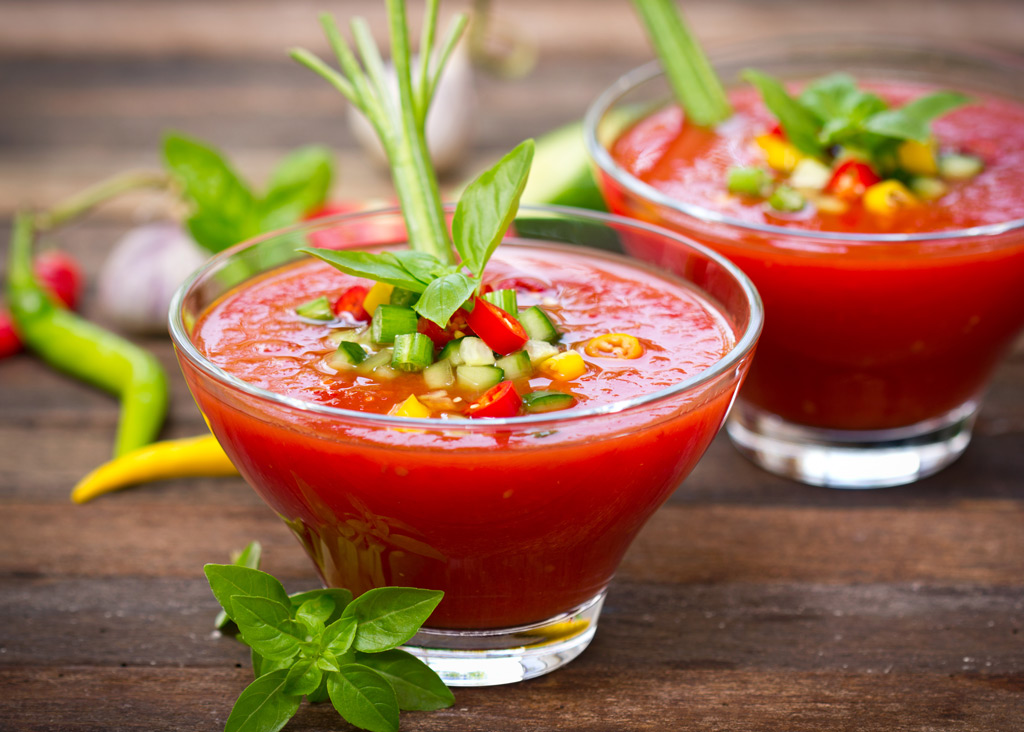
5. Gazpacho
Gazpacho is a refreshing cold soup made from blended tomatoes, peppers, cucumbers, onions, garlic, and olive oil. Originating from Andalusia, it's especially popular in the hot summer months and is often served as a starter.
6. Churros con Chocolate
Churros are deep-fried pastries that are crispy on the outside and soft on the inside. They are often enjoyed for breakfast or as a snack, served with a thick hot chocolate for dipping. This delicious combination is a favorite among both locals and tourists.
7. Pimientos de Padrón
These small green peppers are typically sautéed in olive oil and sprinkled with sea salt. Most are mild, but occasionally, one can be quite spicy, making eating them a fun and surprising experience. They are a popular tapa in Galicia.
8. Pulpo a la Gallega (Galician Octopus)
This dish features octopus that is boiled, sliced, and typically served with paprika, olive oil, and coarse salt. It is a specialty of Galicia and is often enjoyed with potatoes.
9. Fideuà
Similar to paella, fideuà is a noodle dish traditionally made with short, thin noodles instead of rice. It often includes seafood such as shrimp and squid, and it's flavored with saffron and served with alioli (a garlic mayonnaise).
10. Flan
Flan is a popular dessert in Spain, made from caramelized sugar, eggs, and milk. It is a creamy custard with a smooth texture, often served with a drizzle of caramel sauce on top.
11. Cocido
Cocido is a traditional Spanish stew that varies by region but typically includes meat (such as beef, pork, or chicken), vegetables, and chickpeas. The dish is often served in multiple courses, with the broth as the first course and the solid ingredients served separately.
12. Sangría
While not a food, sangría is a famous Spanish beverage made from red wine, fruit, and a splash of brandy or orange juice. It's typically served chilled and is popular in social gatherings, especially during the summer.
13. Empanadas
Empanadas are savory pastries filled with various ingredients, such as meat, cheese, or vegetables, and then baked or fried. They are popular as snacks or appetizers in many regions of Spain.
14. Bacalao (Salted Cod)
Bacalao is a traditional ingredient in Spanish cuisine, particularly in dishes like Bacalao al Pil-Pil, where the salted cod is cooked with garlic and olive oil. It is widely consumed, especially during Lent.
Spanish cuisine is a delightful mix of flavors, colors, and traditions, offering something for every palate. Whether enjoying tapas in a bustling bar, savoring a hearty paella by the sea, or indulging in sweet churros, experiencing the food of Spain is an essential part of understanding its rich culture and heritage.

